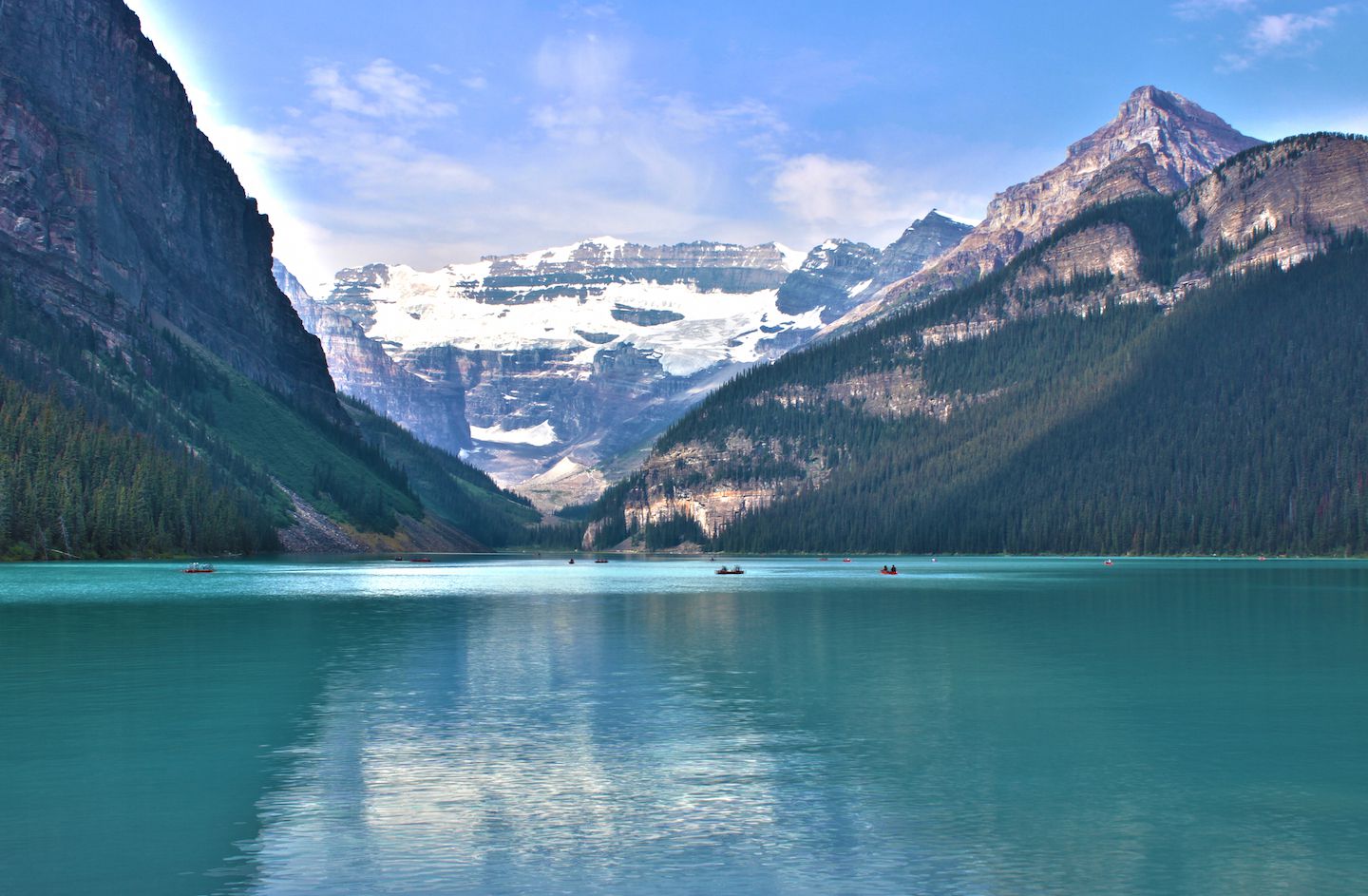We are leaving for our Asia trek in less than a week now, but that doesn’t mean that we have just been counting the days left until we depart. I’ve been in Calgary, Canada for almost a month now, as we decided to use it as a meeting point, considering that there are no direct flights connecting Brazil to Asia. Since then, I’ve been enjoying to the fullest extent what the Canadian summer has to offer in western Canada – outdoor activities and beautiful scenery.
Banff National Park
During my first week, we visited this incredibly preserved park quite a few times. I had the opportunity to visit during the winter time before, but I must say I didn’t recognize it without all the snow. Banff is a small town surrounded by mountains and lakes that make this place unique and perfect for vacationing.
One of the various mountains in the region is Sulphur Mountain, 2,451m high, covered by pine trees and rugged rocks. The Banff gondola takes thousands of tourists up and down everyday; however, we decided to do it the hard way and trek our way up. A 2h30min trek takes you along the 5.4km trail with 704m elevation up to the summit.
During the first few minutes of the trek, I found out how this mountain got its name. You could smell the strong and distinct odor of sulphur amongst the rocks. What also struck me during the trek is how clean and preserved the forest around it is – even though thousands of people trek up this particular trail, there were no signs of any litter.
Throughout the grueling trek, we were rewarded with occasional glimpses through the trees of the incredible views of the town of Banff, Mount Cascade, Mount Rundle and the other surrounding peaks.

At the summit, the view is breathtaking. You can see the Canadian Rockies extending far into the distance. There is also a side trek to the Cosmic Ray Observatory atop Sanson’s Peak, which operated from 1903 until 1978, providing cosmic ray data to the scientific community. It’s still possible to look through the window and see the rustic equipment and cabin used at the time.
We decided to take the gondola on the way down since it was already late and – I confess – we got too lazy to make the trek all the way down.
Lake Louise / Mirror Lake / Lake Agnes
I’ve been wanting to come to Lake Louise since I found out about it a few years ago. Everyone told me about how beautiful the color of the water is combined with the view of the mountainous background. Let me tell you, the stories do not do justice to how beautiful this place actually is. The emerald color of its water is surreal.

Lake Louise is fed by the waters that melt from the glaciers in the surrounding mountains. When the glacier moves against the rocks beneath it, small particles of rocks and debris known as rock flour are created. The rock flour floats a few feet under the surface of the lake, making the water opaque and giving the lake its spotless emerald color.
There are many hiking trails from Lake Louise up into the mountains. We took a trail that led to two smaller lakes – Mirror Lake and Lake Agnes. At Lake Agnes, I took the risk of wading into the water for some pictures and I felt the numbingly cold glacial waters first-hand. After a few minutes in, I couldn’t feel my feet anymore and had to get out as fast as possible. Even though it was a painful experience, it was worth it for a nice view of the lake and this picture of me.

The walk back to Lake Louise was fairly easy and the views equally beautiful. I will engrain the images of this surreal place in my memory forever.
